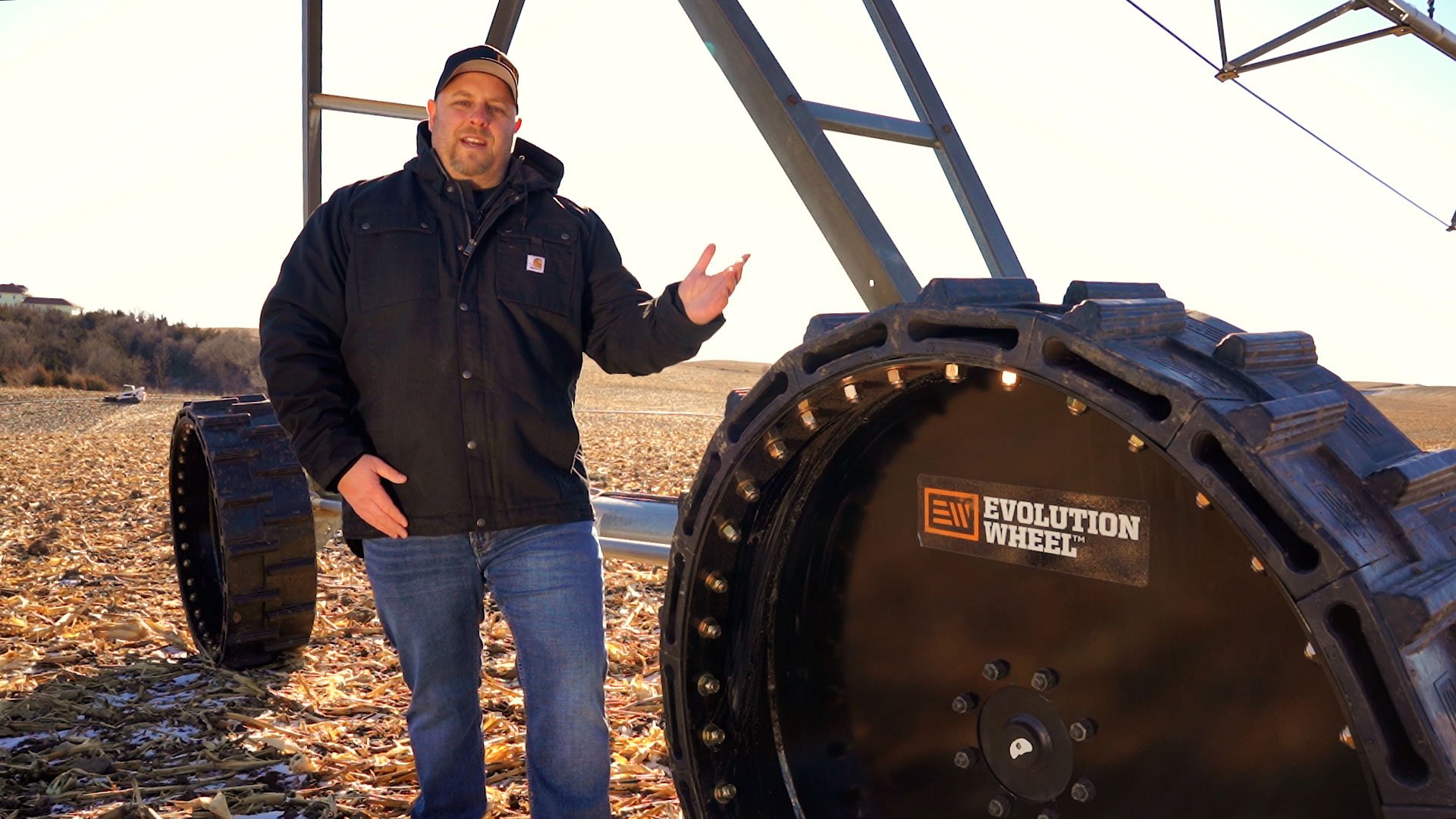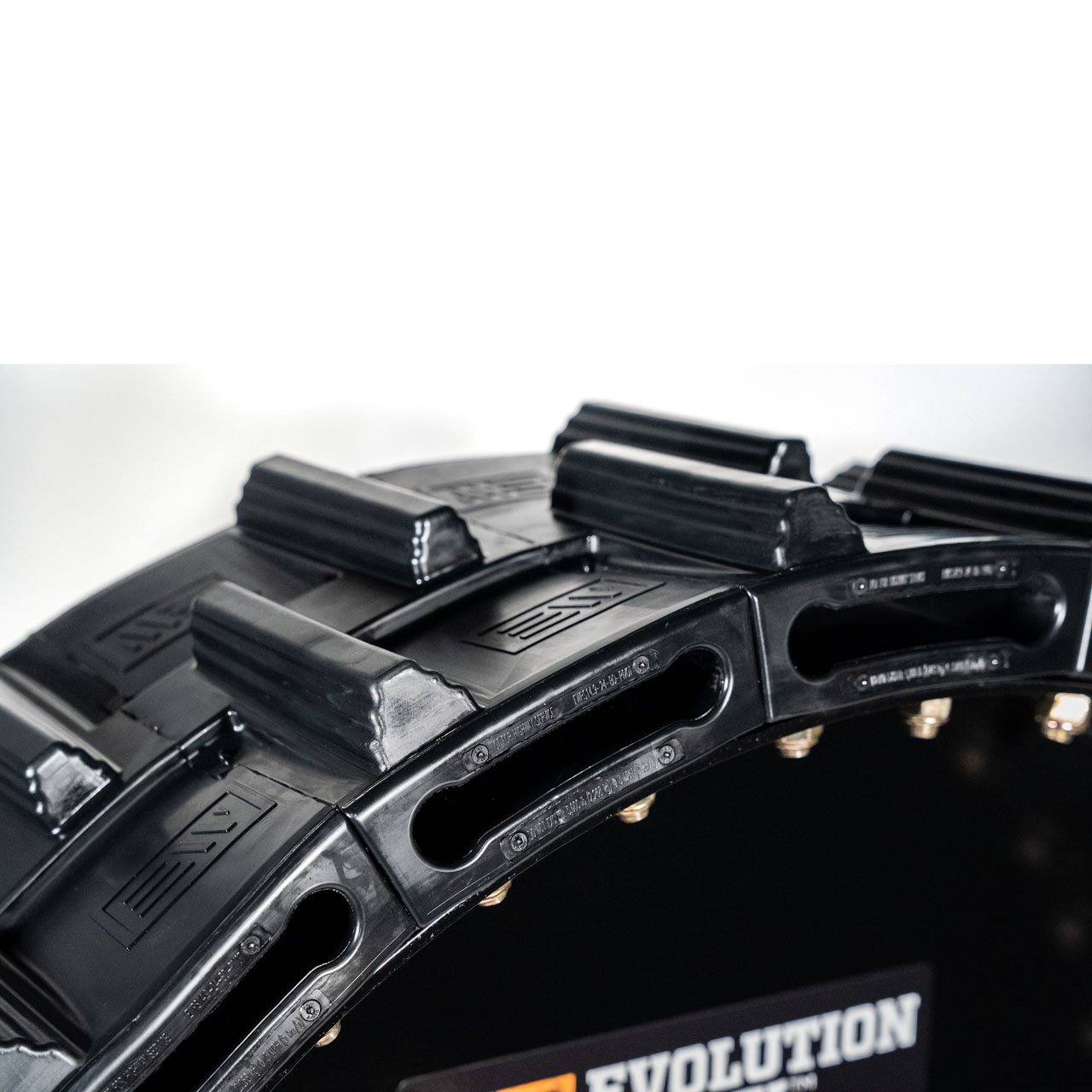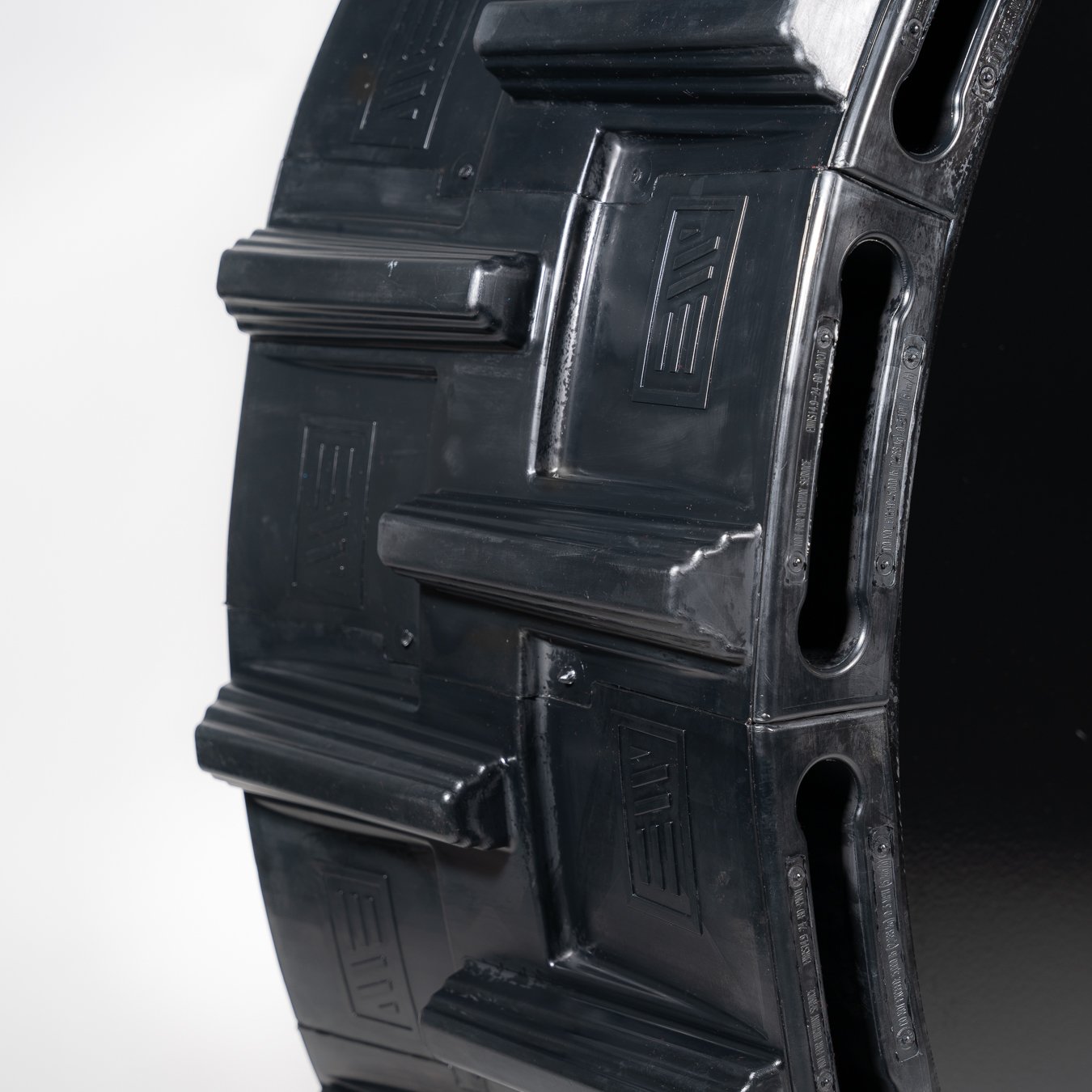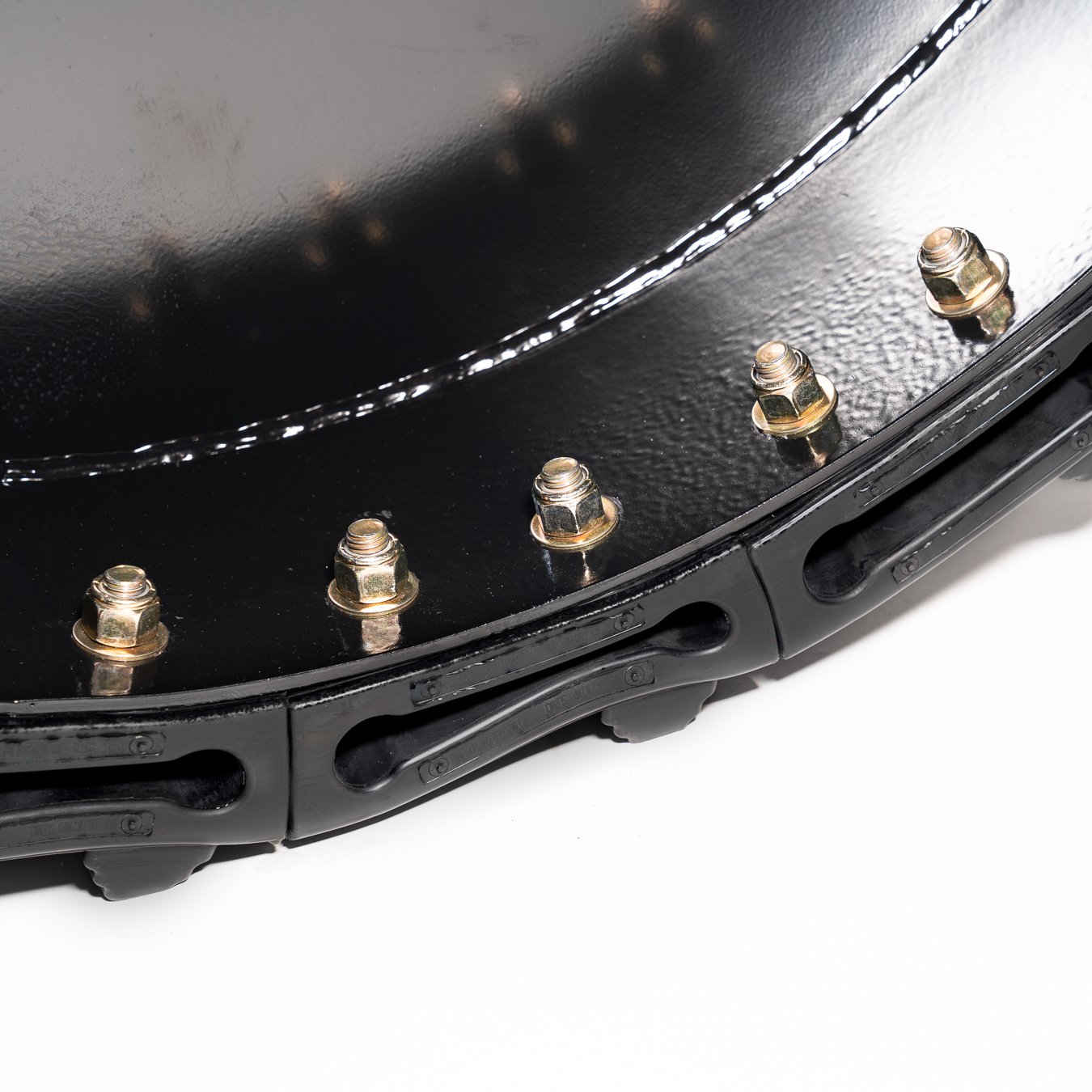Steel Pivot Tires Vs. The EWRS-PIVOT Irrigation Tire
What are the differences between Evolution Wheel’s EWRS-PIVOT series irrigation tire and a steel pivot tire? what are the pros and cons? Why should you choose the EWRS-PIVOT irrigation tire? We know the EWRS-PIVOT tire will blow any steel pivot tire out of the water and we want to tell you exactly how it does.
Steel Pivot Tires
Let’s start with steel tires. Flat tires are the biggest problem farmers face when dealing with center pivot irrigation systems. Flat tires cause system stoppages that can damage the irrigation system itself, then changing the tire and getting it off the field is a massive headache.
The biggest appeal steel tires have is the fact they don’t go flat. Farmers that are incredibly frustrated with flat tires might see steel tires as a great solution. They don’t go flat, are low maintenance, and will last a long time in harsh conditions. All great reasons to go for a steel pivot tire. However, they do have some drawbacks. The biggest issue that they all have is that they have no flexibility. Being made of steel, they aren’t capable of flexing around objects limiting traction and adding additional stress on the driving components.
Steel pivot tires are often designed with multiple flat surfaces instead of being circular. This causes more traction issues and stress of the gearbox as it is not a smooth drive from section to section. To put it simply, by going with a steel pivot tire, you won’t have flats, but you will have to replace the gearbox more often.
The EWRS-PIVOT Series Center Pivot Irrigation Tire
Like steel pivot tires, the EWRS-PIVOT series irrigation tire will never go flat. It too is a low-maintenance tire, made to last and on top of that has the flexibility that steel tires do not.
The EWRS-PIVOT has a unique core hole geometry that compresses completely when pressure is applied. This allows the tire to compress like a pneumatic mimicking its traction and reducing stress on the gearbox increasing its lifespan as well. On top of that, the EWRS-PIVOT Series tire is self-cleaning, so you don’t have to worry about added weight to the system.
In addition to this, the EWRS-PIVOT Series is designed with a concave profile that keeps mud underneath the tire preventing ruts where the aggressive tread design increases overall floatation and traction.
The EWRS-PIVOT’s high-quality rubber has UV protection, and the rims are made with high-strength steel that will last a lifetime. It is also a segmented tire. Each segment is bolted onto the rim so all you need is a 3/4" socket to service the tire when it’s damaged. The rubber on our tires will last 2-3 times the life span of your traditional pneumatic tire, without the risk of going flat.
Ultimately, steel pivot tires are a great solution to flat tires, but it still causes issues elsewhere. The EWRS-PIVOT Series addresses the issues of flat tires and rutting in your field while not increasing stress to your gearbox.
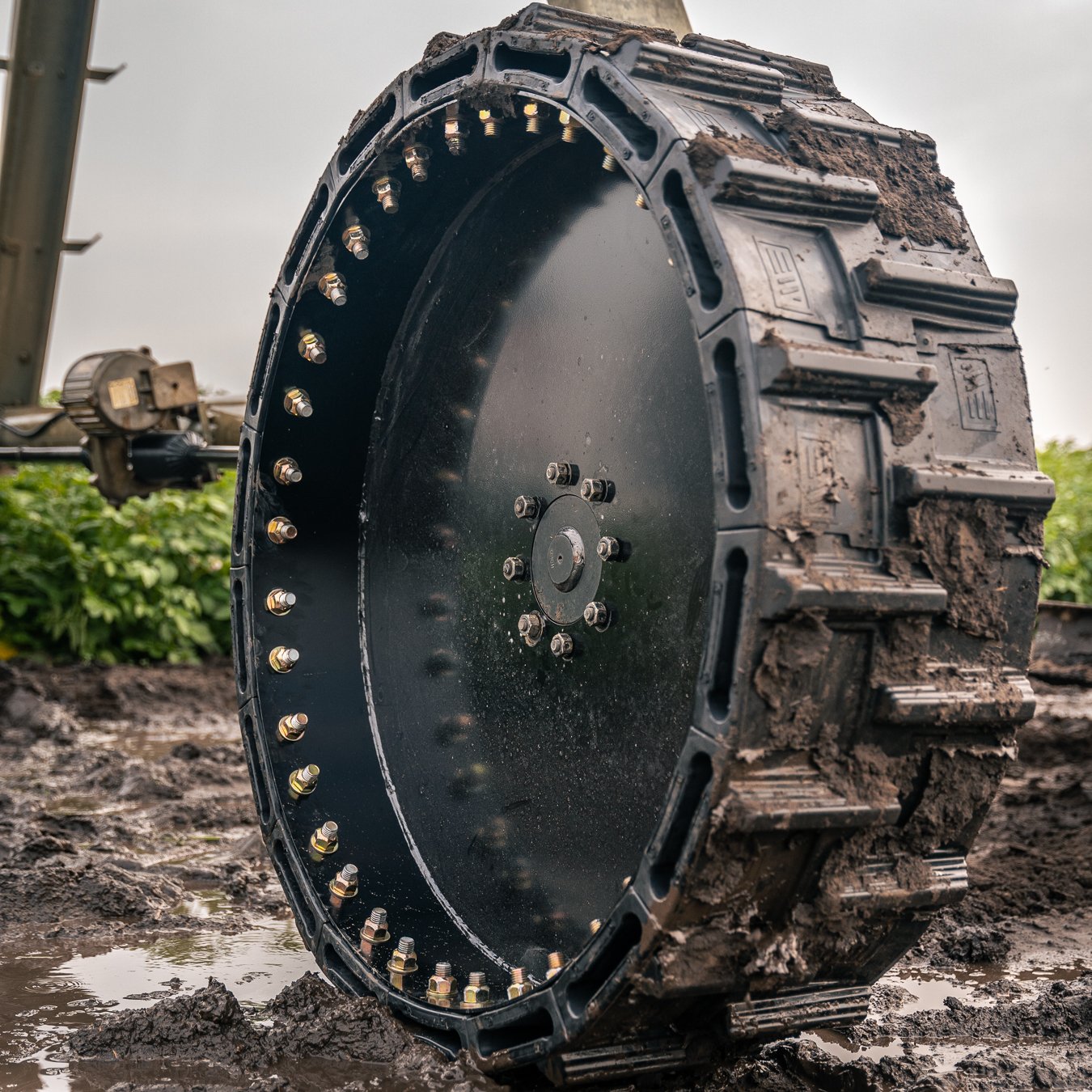
EWRS-PIVOT SERIES
The EWRS-PIVOT series of airless pivot tires from Evolution Wheel offers the most advanced airless technology to the irrigation market. This solution delivers serviceability, traction, and floatation into one impressive offering.
Our tread design and tire profile offer greater traction through mud and obstacles. The unique concave contact face helps eliminate rutting by keeping dirt under the tire, where it belongs. The face of the tire is pointed inwards. Compared to typical pneumatic irrigation tires which convex shape push mud out from under the tire, causing ruts.
Our proprietary segmented design bolts onto our high strength wheel, allowing you the ability to service the tire quickly, eliminating the need to change a tire in the field.
Unlike other airless pivot tires, the EWRS-PIVOT compresses flat pushing material out, it's a self-cleaning system. The compressed cores elongate the footprint of the tire allowing it to wrap over obstacles increasing traction and reducing ground pressure.

Related Pages
If this page was informative, check these out:


